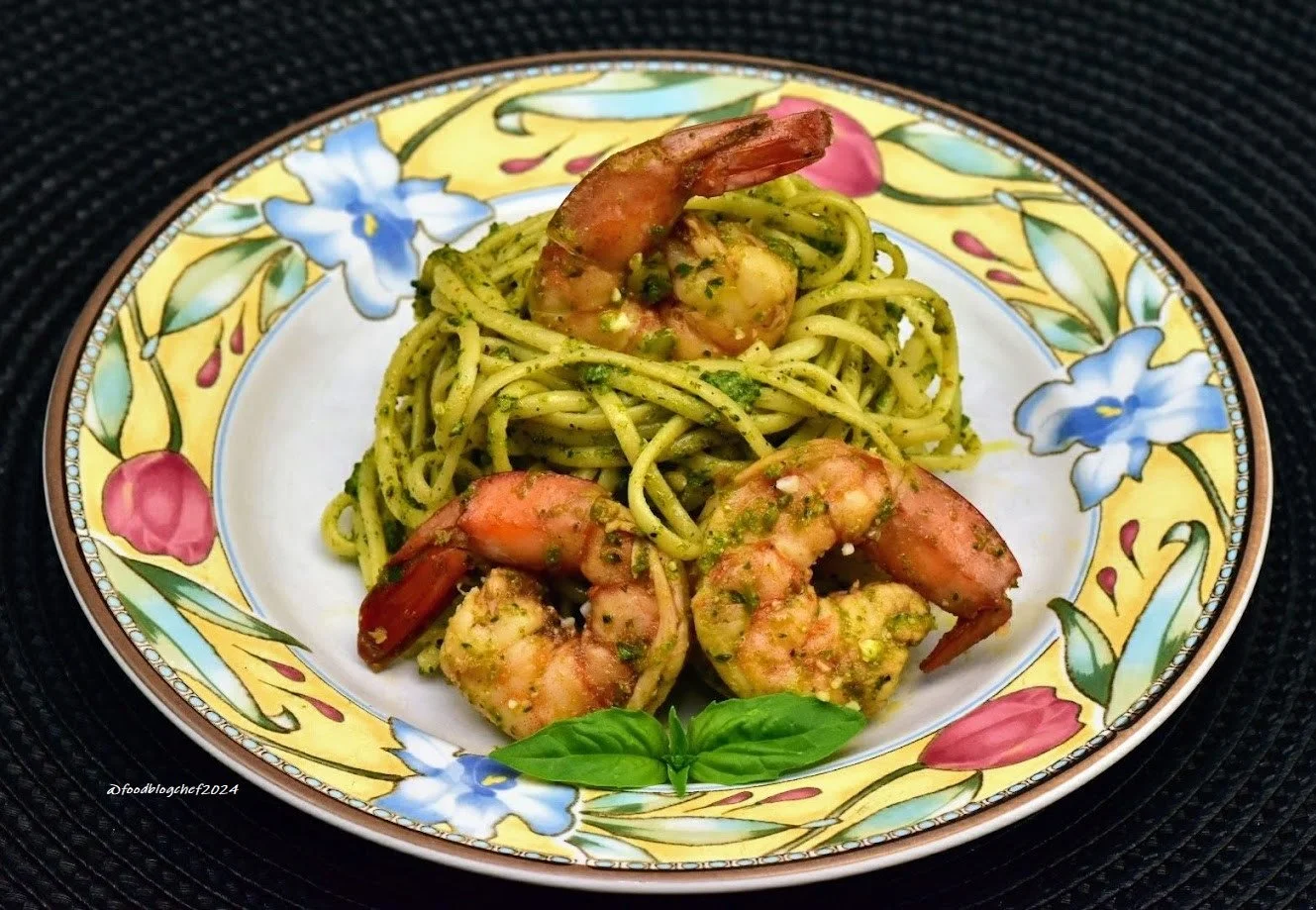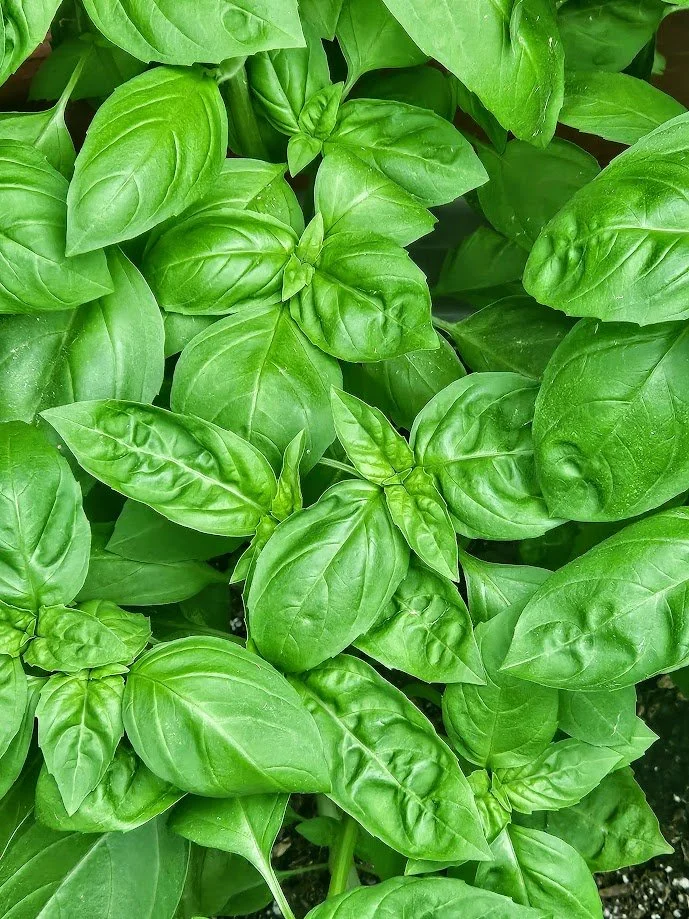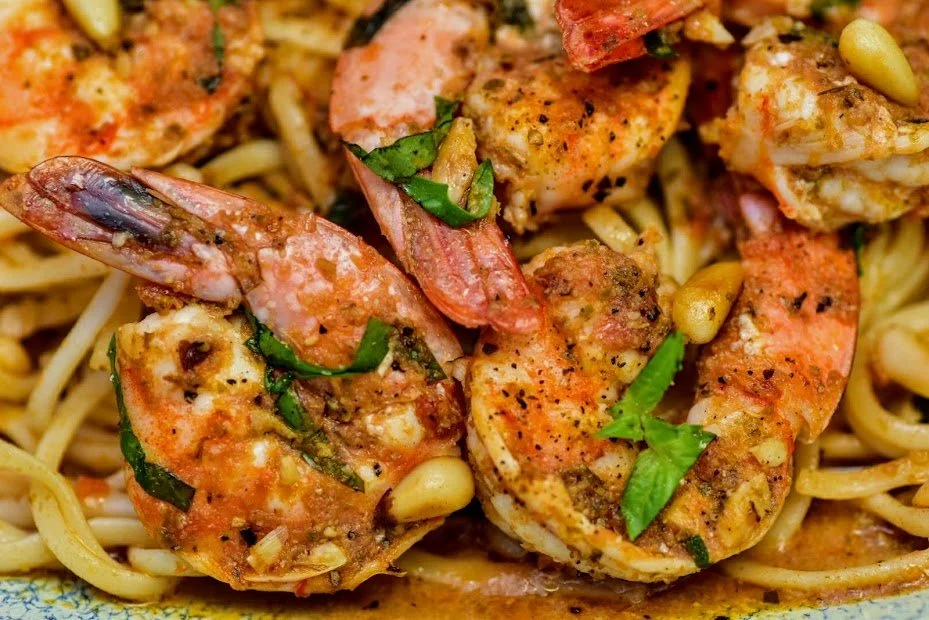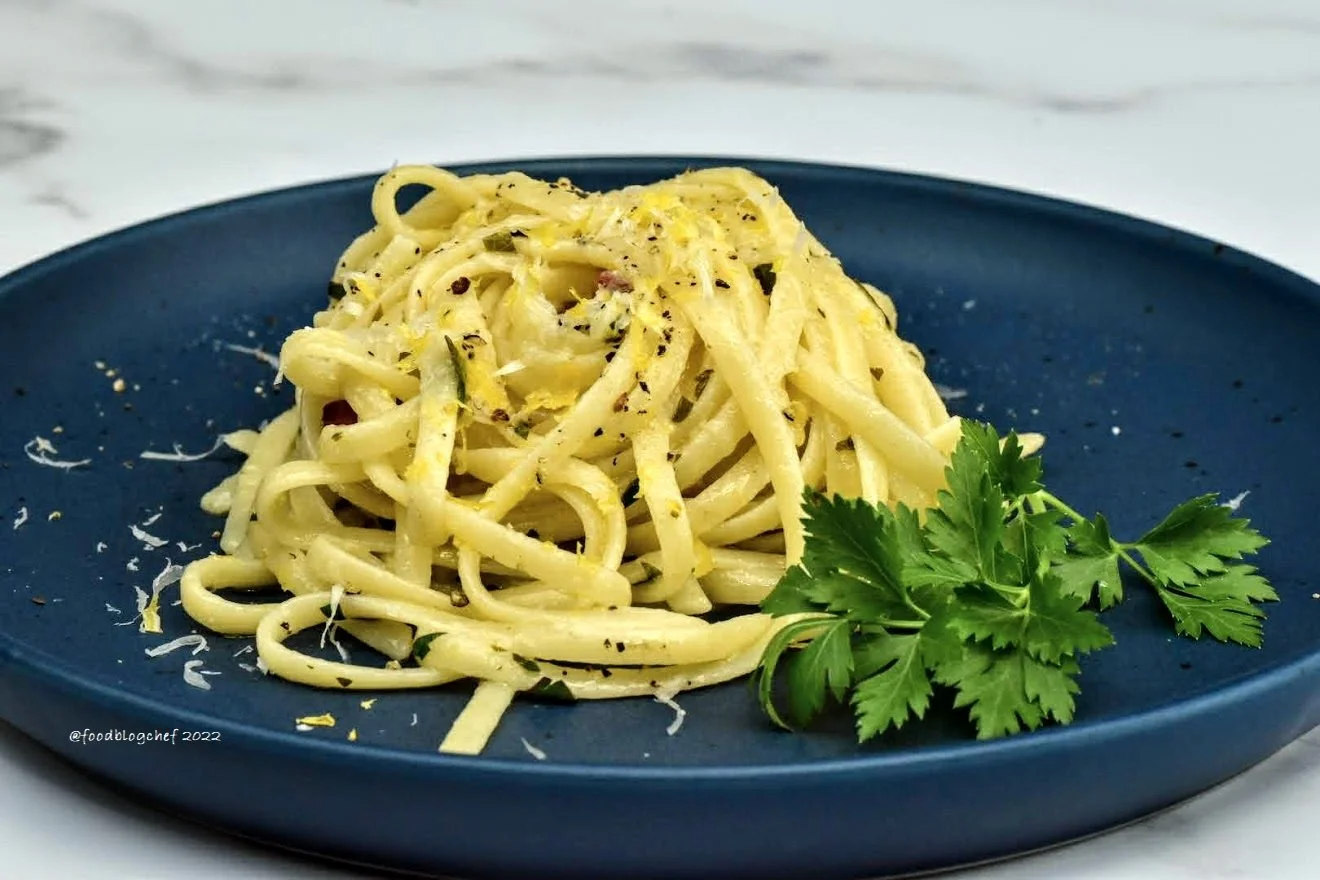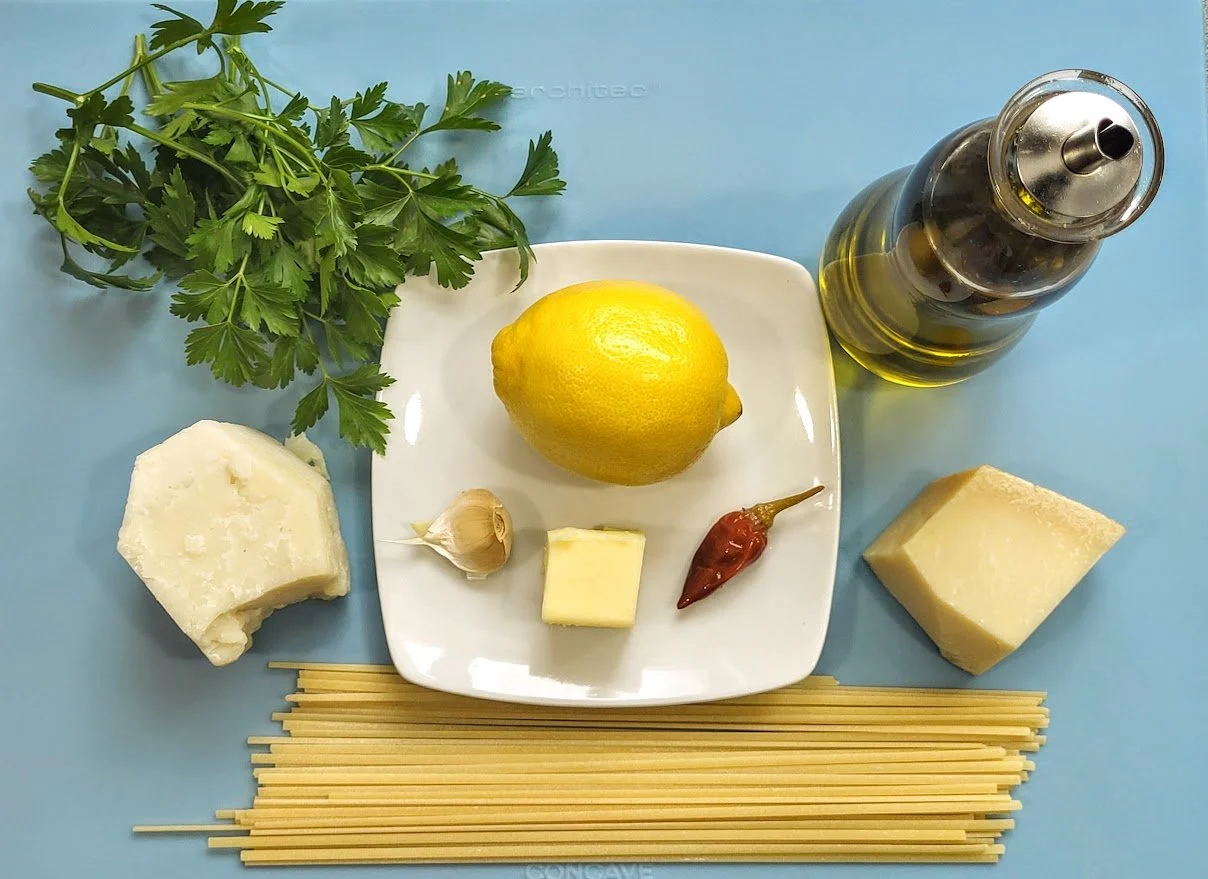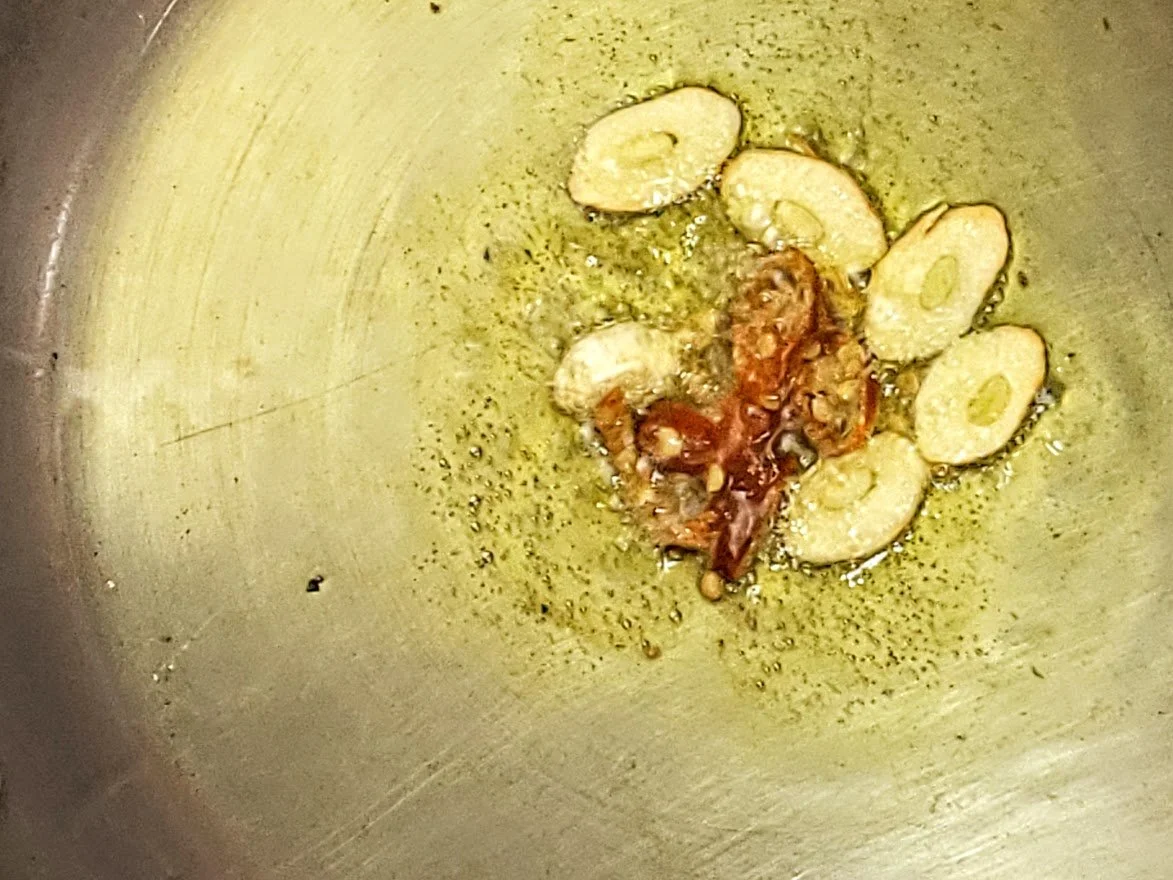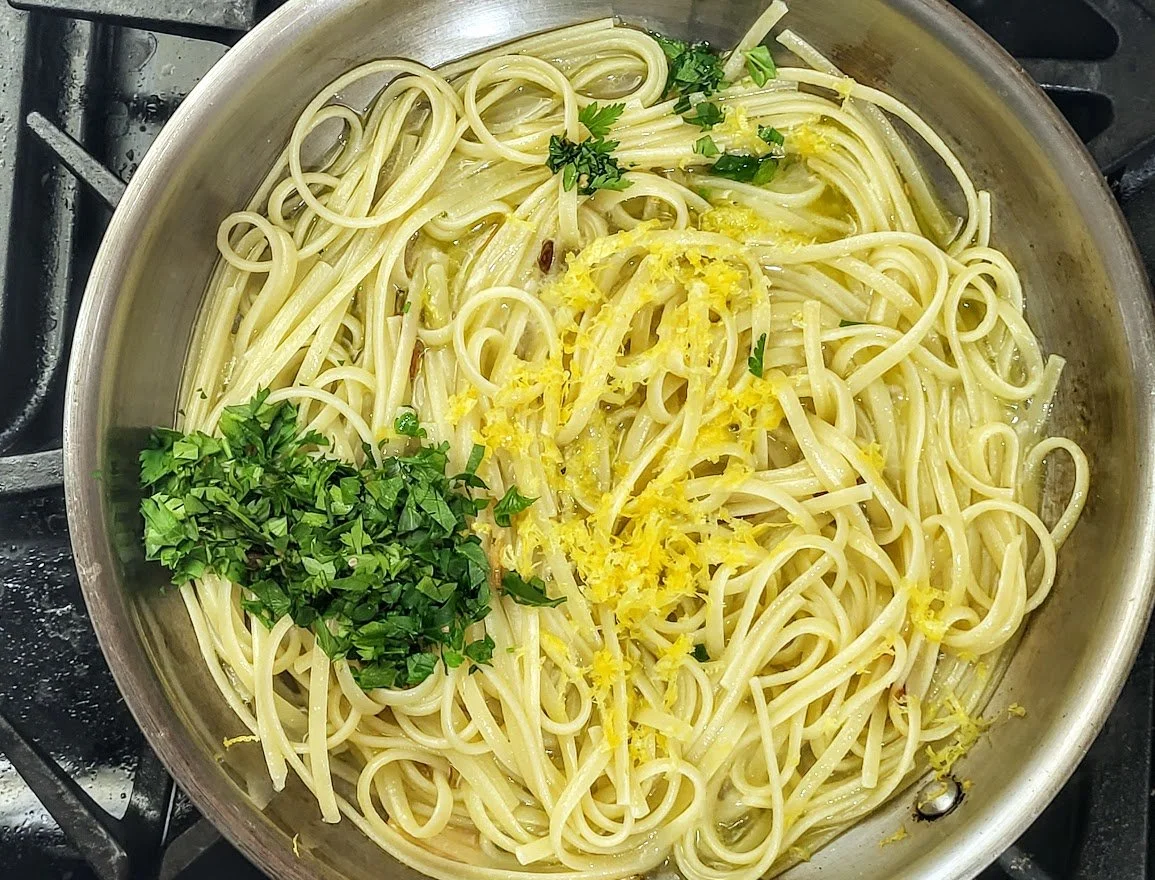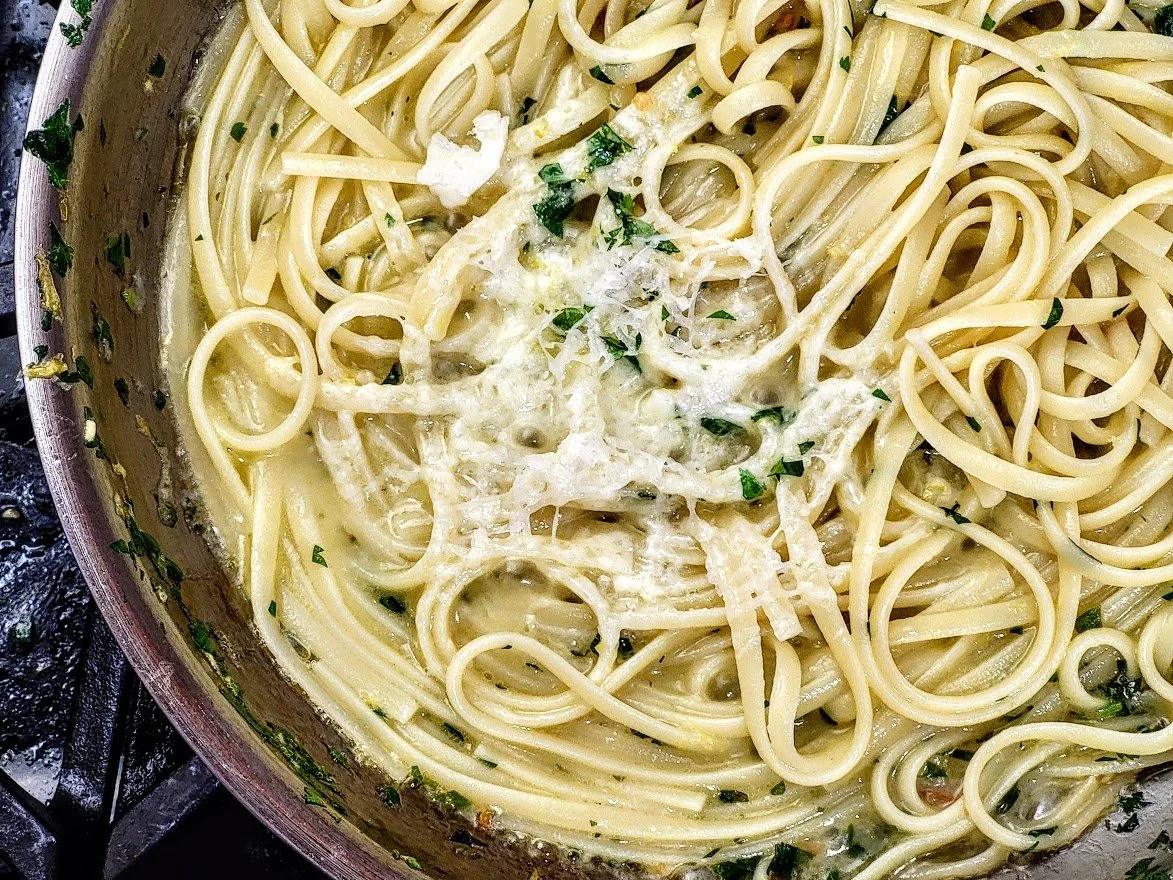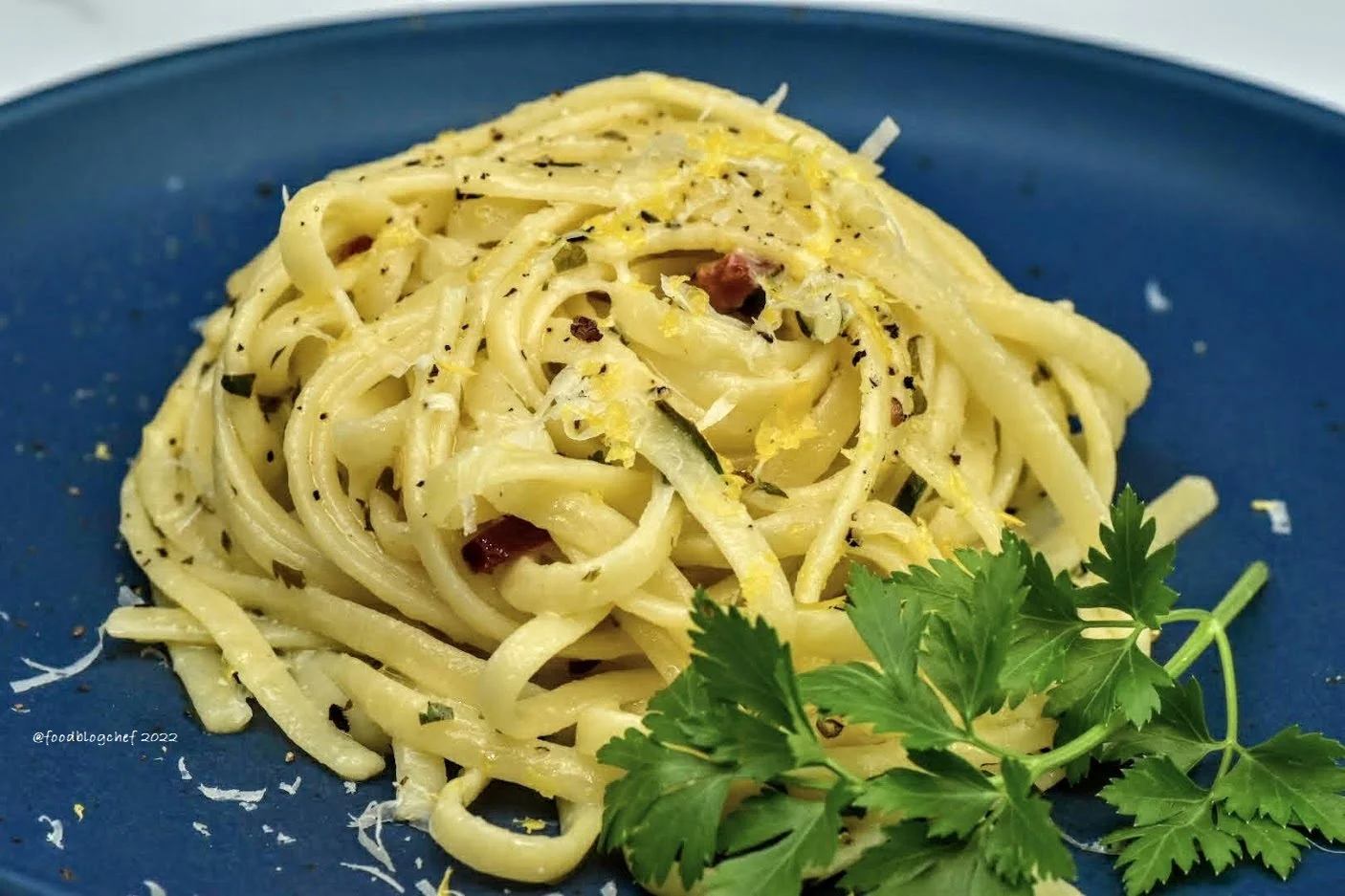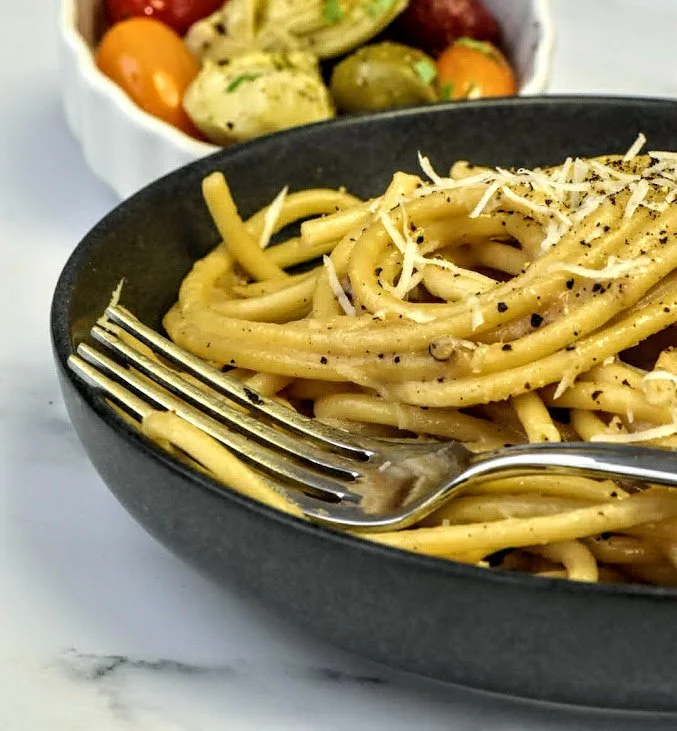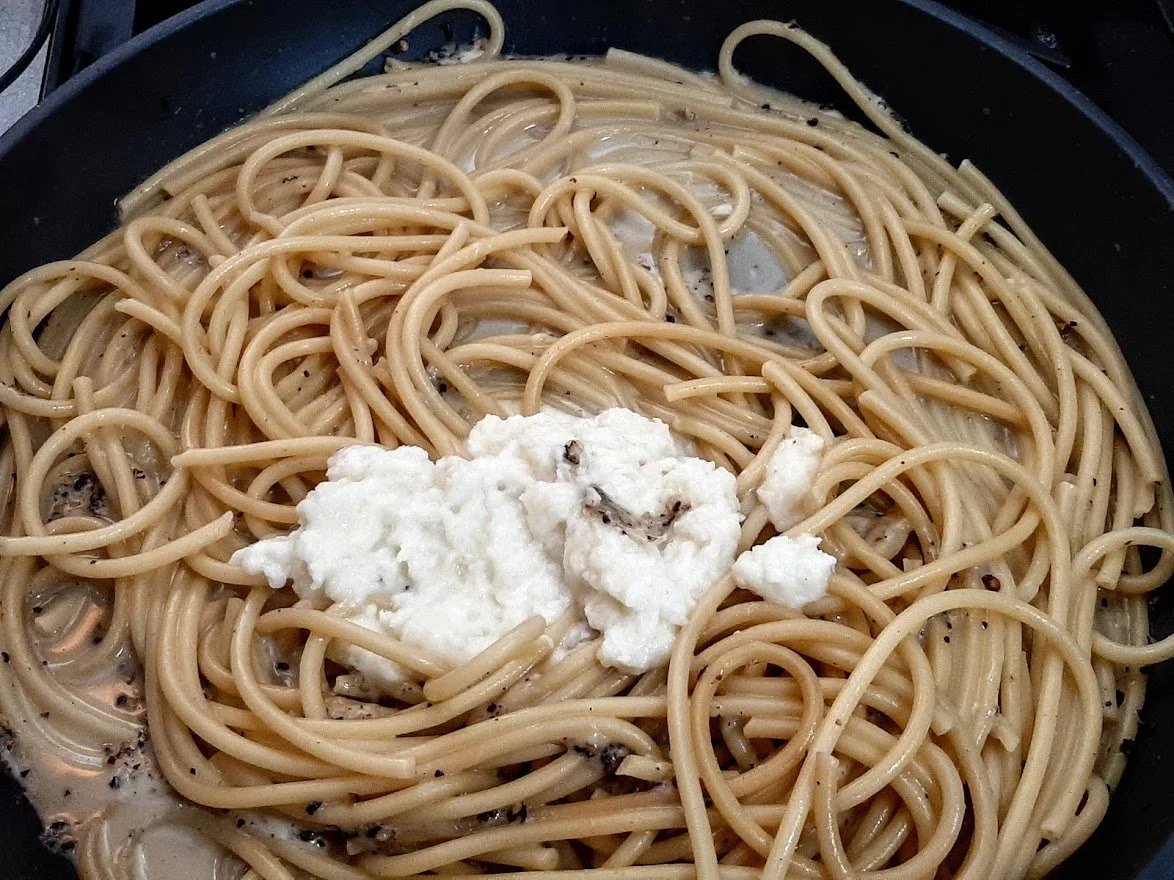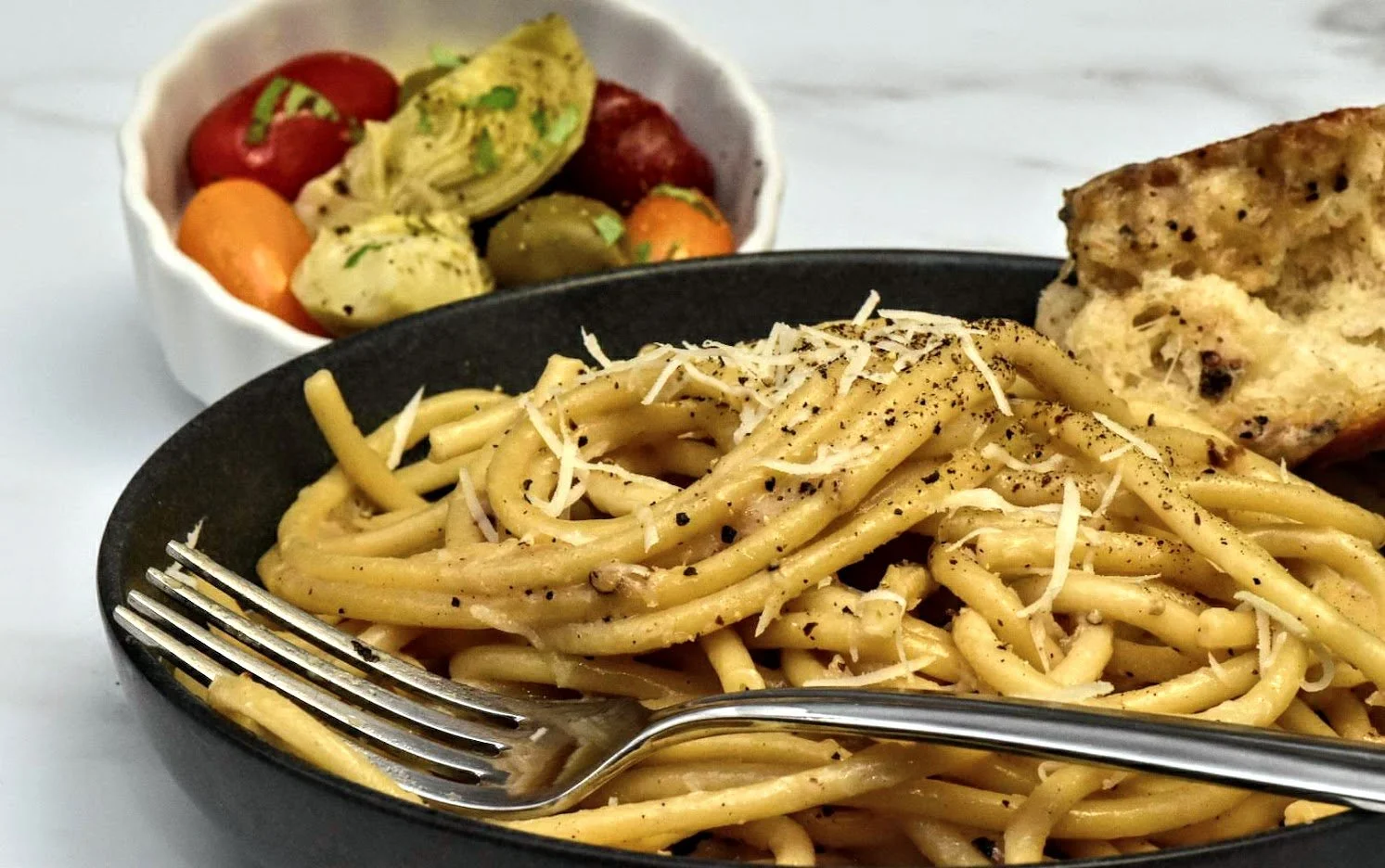Pesto Genovese →
This recipe is adapted from Pesto World Championship finalist, 77-year-old Maurizio Valle. Valle’s specialty is “pesto genovese” which uses garden fresh basil, pine nuts, garlic, good quality olive oil, a mixture of Parmesan and Pecorino Romano cheeses, and coarse salt. One of the most famous and versatile Italian sauces worldwide, the word “pesto” comes from the Italian “pestare” meaning to crush. According to Saveur, the recipe for Pesto Genovese first appeared in Giovanni Battista Ratto’s “La Cuciniera Genovese” in 1863. This version of Valle’s recipe adds a bit of lemon zest and uses an easy two-step method that is less labor intensive than using a mortar and pestle to crush the ingredients with similar results. I hope you enjoy it as much as I do. Mangiare bene!
PESTO GENOVESE
Ingredients
3 cups of fresh basil leaves (smaller leaves preferred)
3 tablespoons of pine nuts
1 clove of garlic
1/2 teaspoon coarse Kosher or sea salt
1 teaspoon finely grated lemon zest
a mixture of 4 tablespoons of grated Parmigiano Reggiano, plus ½ tablespoon Pecorino Romano
1/3 cup mildly flavored extra-virgin olive oil
Optional: ¼ teaspoon red pepper flakes
Preparation (you can do it the traditional way using a mortar and pestle and a lot of elbow grease, or use the two-step method below)
Place all the ingredients into a small food processor. Blend as finely as you can, pausing to scrape down the sides of the processor until you have a paste.
Scrape the paste into a Weck jar or other jar slightly wider than the immersion blender. (I use a 4-cup Pyrex measuring cup.) Process using an immersion blender until you have a smooth emulsified paste.
Use three tablespoons of the pesto paste for every four ounces of dry pasta. Cook the pasta to al dente and drain reserving a small amount of the cooking water. Add the cooked pasta to the paste and mix well. The water from the pasta will loosen the paste to create your pesto sauce. If necessary, add a small amount of the reserved pasta cooking water to achieve the sauce consistency you prefer.
Garnish with shaved Parmesan or a sprinkle of toasted Panko bread crumbs.
Note: try walnuts in place of pine nuts
For Freezing: some people will blanch the basil leaves and immediately give them a cold water bath to preserve the bright green color of the leaves. If you take this extra step, dry the leaves well before processing them. Process the pesto as above. As a rule of thumb, use 3 tablespoons of pesto per 4 ounces of dry pasta; 3/4 cup (12 tbs.) of pesto will sauce about a pound of pasta. Measure and freeze the pesto in freezer containers topped off with a thin layer of olive oil to help prevent the basil from oxidizing and turning an unappetizing color. Alternatively, spoon the pesto into ice-cube trays, top with olive oil (optional), and freeze. Once frozen, the pesto-cubes can be stored in zip-lock plastic bags in your freezer for up to 6 months. For reference later, it's helpful to note how many tablespoons of pesto you use for one cube or each container.
Wine pairing:
White wines: Viognier, Pinot Gris, Sauvignon Blanc, Pinot Grigio, Vermentino
Red wines: Rosé or a light-bodied red wine like a Beaujolais or Pinot Noir
Adapted from: https://food52.com/blog/25401-how-to-make-pesto

